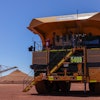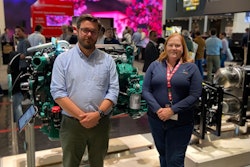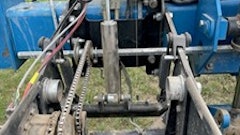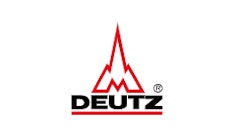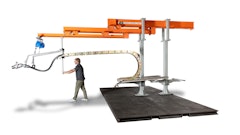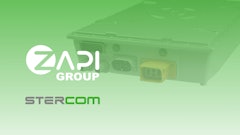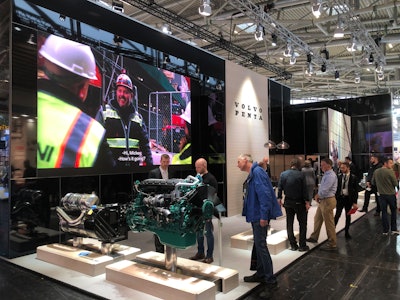
The packed press conference featured two major new additions to Volvo Penta’s portfolio: the new cube battery and the dual-fuel hydrogen engine. Both were met with excitement because they offer flexibility to OEMs.
The Cube Battery
Volvo Penta launched its new cube battery at bauma Munich, offering industrial customers increased installation flexibility and a 40% increase in energy density. The company's existing flat-pack battery has also been improved to deliver a 40% increase in energy density. The cube battery is based on proven Volvo Group technology. The cube-shaped battery increases the versatility and flexibility of Volvo Penta's electromobility offering, opening electrification opportunities for more customers across a wider range of industrial subsectors, machines and applications.
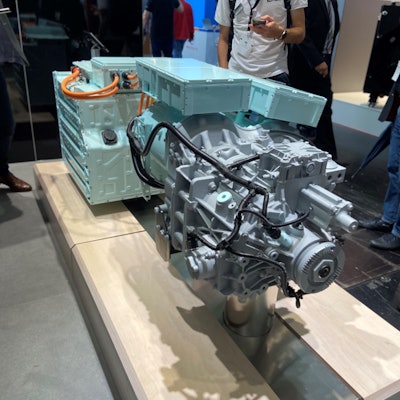 The cube battery displayed at the Volvo Penta stand during bauma
The cube battery displayed at the Volvo Penta stand during bauma
Both Volvo Penta’s cube battery and its existing flat-pack battery—which went into production in 2021—offer customers reliable power and range with a 40% increase in energy density compared to what was previously available, allowing equipment to operate for longer before a recharge is needed.
The cube battery measures 768 mm x 684 mm x 668 mm, boasting a lighter design. It delivers 90 kWh of energy, while the updated flat-pack battery delivers 94 kWh of energy.
The cube battery is a proven Volvo Group technology that is already being used in Volvo Trucks and benefits from hundreds of thousands of hours of testing and real-world use.
 Volvo Penta's electric driveline incorporating the cube batteriesVolvo Penta
Volvo Penta's electric driveline incorporating the cube batteriesVolvo Penta
As with the flat-pack battery, Volvo Penta will further develop and adapt the Volvo Group’s electric platform and combine it with its knowledge and experience with the different applications, environments and climates in which its customers operate.
Dual-Fuel Hydrogen Engine
In addition, Volvo Penta revealed its dual-fuel hydrogen engine at bauma as part of its transformation journey into new, sustainable technologies. Using hydrogen as a renewable fuel source, the engine—which is an evolution of the company’s proven D8 model—will reduce carbon dioxide (CO2) emissions by up to 80% without impacting power or performance.
 The dual-fuel hydrogen engine
The dual-fuel hydrogen engine
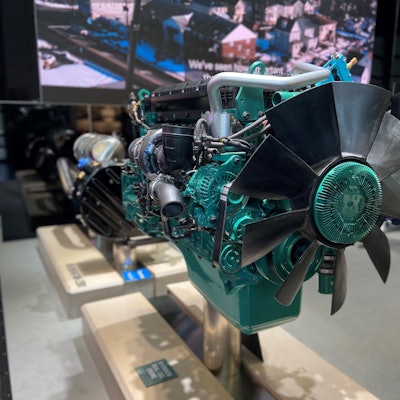 The dual-fuel hydrogen engine on exhibit during bauma
The dual-fuel hydrogen engine on exhibit during bauma
“Collaboration and partnerships are essential to facilitate the transformation towards more sustainable power solutions,” says Anders. “This close partnership approach is a cornerstone of Volvo Penta’s long-term decarbonization and business strategy. We work closely with our customers and partners to create tailored solutions based on their requirements.”
At bauma? Learn more at Stand A4.526.


